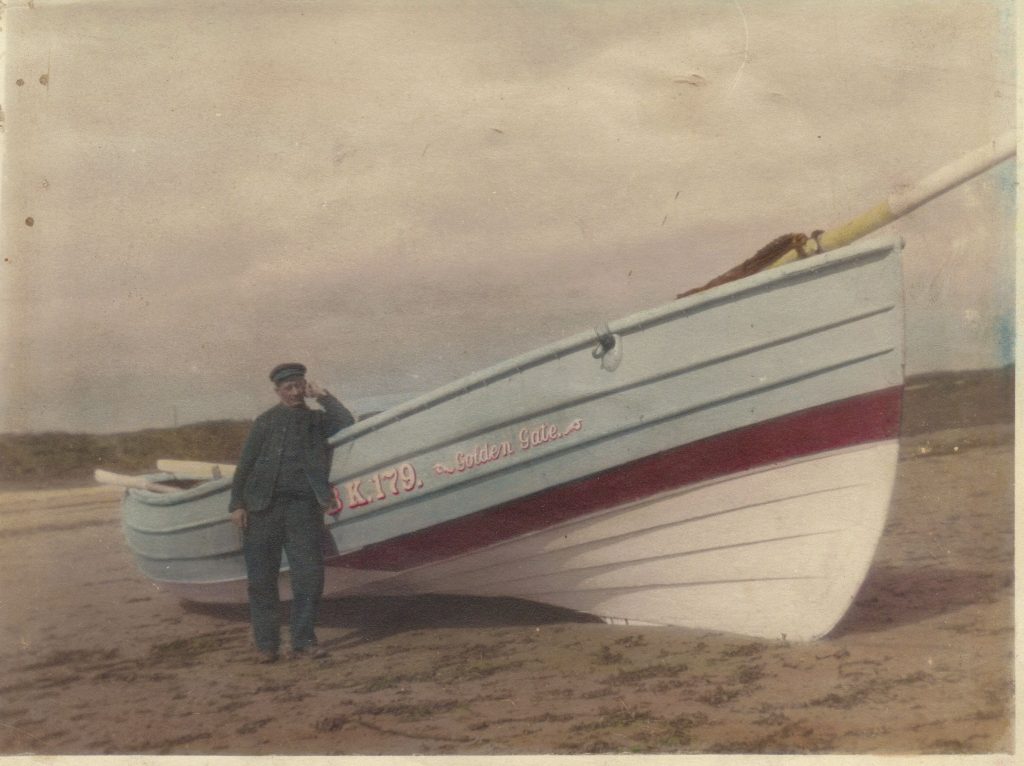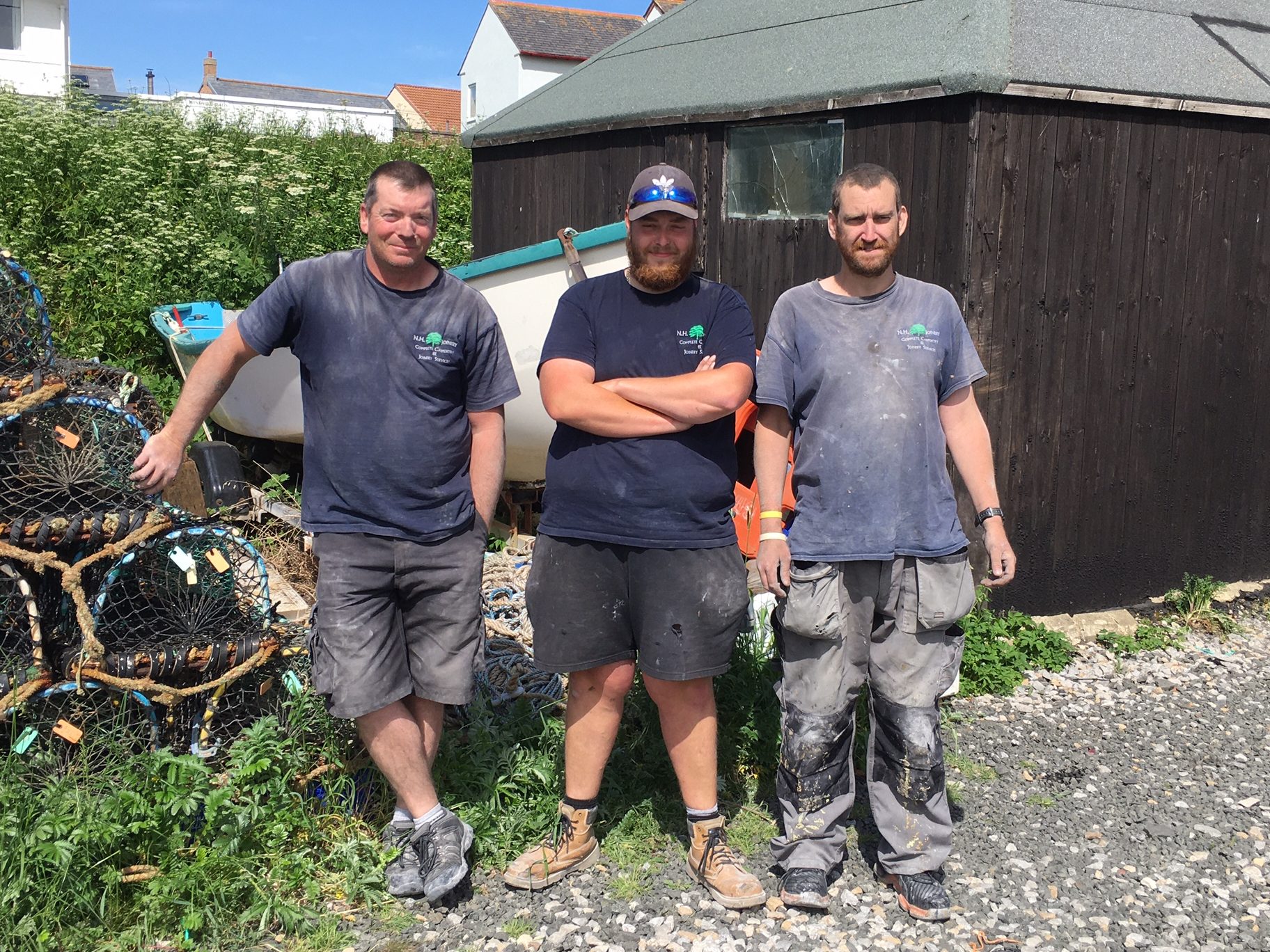fishing
Coble
The word ‘coble’ refers to the wooden boat traditionally used for inshore fishing on the NE English coast between Berwick-upon-Tweed in Northumberland and the Humber in Yorkshire. We offer the word because a coble is more than just a boat. Built by the eye, without a plan, its lines evolved over centuries for sail, to respond economically to the wind and local sea conditions. Its characteristic shape, deep ‘forefoot’ and flat bottom aft, developed in response to the need to launch from beaches.
Each coble brought human lives into direct, daily contact with powerful, unpredictable forces of nature. Fishing was seasonal, dependent upon what was locally abundant. Although the coble’s development is linked to estuarine salmon netting, at sea its prime winter catch was cod and haddock, caught using ‘long lines’, each carrying 700 hooks. In Northumberland, each man took two lines to sea.
As the focus of a family-based economy, a coble embodied the traditions, beliefs and values of concentric human circles: its crew of three men, their families, the village, and the culture of the entire coast. It required many skills – boat-builder, joiner, blacksmith, sail-maker or engineer – and supported local businesses selling paint, linseed oil, paraffin and ‘perrins’ of thread. In short, a coble represented a whole community.
Our submission comes from a small part of that community, a few Northumbrian families and the poet whose work they inspired. Their language, a distinctive dialect within Northumbrian, has nearly died out. Although there is a definite cultural continuity along what has been called the ‘coble coast’, there remain strong distinctions between ‘Northumbrian’ coastal speech (more Anglo Saxon), and ‘Yorkshire’ (with more Norse words). There are differences, too, between Northumbrian and Yorkshire cobles, and in the way the word is pronounced. It is ‘Cobble’ in Yorkshire.
The root of the word ‘coble’ is probably Celtic, but the boat’s geographical distribution ties it closely to Anglo Saxon Northumbria. The boat itself appears to contain elements from several strata of settlement: Norse, Anglo Saxon, Celtic. It is striking that such a distinctively ‘English’ artefact contains so many international influences. The sea that creates an island identity is simultaneously a road for communication, culture and trade.
The coble represents a fishery that was sustainable over many centuries. Monks on Holy Island in the 1300s employed fishermen and bought gear which included ‘cobles’ and ‘smalynes’ with 700 hooks, and caught most of the same species that were being caught in the early 20th century. There are a number of reasons for this. First, the coble’s size was self-limiting; only small amounts of gear could be used and small catches taken. On many days a coble could not fish at all. Secondly, coble fishing required an intimacy with the sea bed that was handed down. Fishermen learnt to recognise particular ‘ground’ by lining up ‘marks’ – distinctive features on land. Over generations, they mapped the sea floor with reference to events from their community, enmeshing their own stories with those of the natural world. It was in their interest to ensure that the catch was there for the next generation.
Sustainability, however, came at great human cost. Fishing from a sailing coble was dangerous. Many lives were lost. Close dependence on the natural world was also economically unpredictable. Most of all, line fishing placed a terrible burden on women’s lives. Women were heavily involved in many land-based aspects of the coble, especially selling fish and baiting lines. Every hook required at least one mussel. Bait had to be gathered from the rocks, carried home and ‘skyened’ (shelled), then placed onto 1,400 hooks every day. This work was gruelling, unpaid – and inescapable.
In Northumberland, engines replaced sails in cobles after World War I, and long line fishing ended around 1950, replaced by less sustainable methods, such as seine-netting and small trawlers. Very few cobles still fish from Northumberland, now mostly potting for crabs and lobsters. No new working coble has been built in Northumberland since the early 1990s. They have been superseded by fibreglass vessels of ubiquitous design, with more powerful engines. These boats preserve some aspects of coble culture, but tend to fish more intensively. They often deploy electronic plotters and echosounders alongside or instead of inherited knowledge. In contrast to the community surrounding a coble, they may be operated by just one man.
Without sentimentalising the harsh realities of long line fishing, we believe that the coble represents a way of life that connected people more intimately with the natural world, and through it, to each other. As such, we believe that the coble does not merely represent the past, but carries important lessons for a sustainable future.



This work is licensed under a Creative Commons Attribution-NonCommercial-ShareAlike 4.0 International License.
Learn more
- The Coble and Keelboat Society
- The Northumbrian Language Society and https://northumbrianlanguagesociety.co.uk/
- K. Porteous, The Bonny Fisher Lad (The People’s History, 2003)
- J. Salmon, The Coble, with commentary by A. Osler, Coble and Keelboat Society Reprint, 2008
- B. Griffiths, Fishing and Folk: Life and Dialect on the North Sea Coast, Newcastle, 2008
- A. Osler, The Curious Case of the Grace Darling Coble, Archaeologia Aeliana 5th ser., 37 (2008)
- A. Osler, The Salmon’s Kingdom: net fisheries of Northumbria, Maritime Life and Traditions no. 25, Winter 2004


